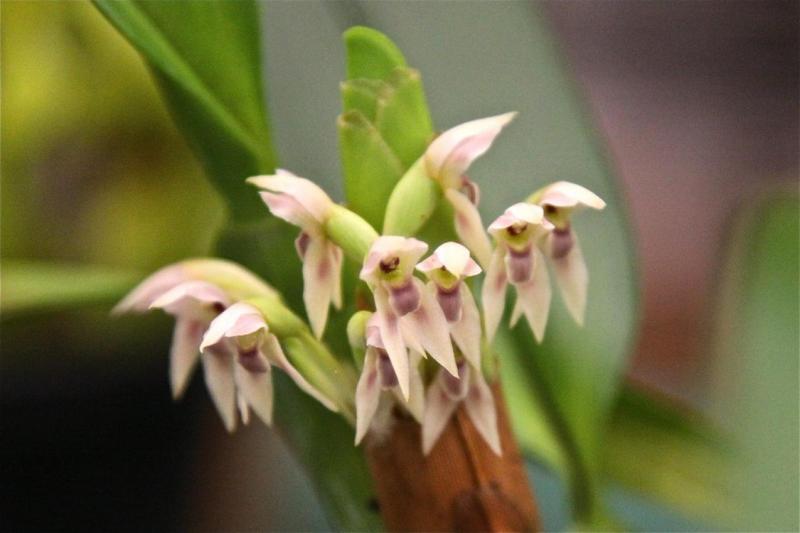Maxillaria densa
Also known as: The Crowded Maxillaria or Maxillaria densa h.f. alborosea Maxillaria densa h.f. rosea Camaridium densum Maxillaria glomerata Ornithidium densum in the subfamily: Epidendroideae
Native to: Belize Chiapas - Mexico Departamento de Chimaltenango - Guatemala Departamento de Huehuetenango - Guatemala Departamento de Jalapa - Guatemala Departamento de Nueva Segovia - Nicaragua Departamento de Zacapa - Guatemala Honduras Oaxaca - Mexico Puebla - Mexico Tabasco - Mexico Veracruz - Mexico
General Information
The Crowded Maxillaria is a cool to warm growing epiphytic or terrestrial orchid belonging to the sub family Epidendroideae native to Belize, Mexico, Guatemala, Nicaragua, and Honduras.
Plant Description
Grows to 0.5-50cm. Each new growth has a single oblong shaped leaf that grows to 3.5-40cm long. Pseudobulbs grow to 1-7cm. The plant has a climbing growth habit
Flowers
Numerous fragrant blossoms appear
Fragrance
The orchid is fragrant.
Substrate(s)
- Coarse
- Medium
- Bark
- Charcoal
- Spaghnum Moss
- Perlite
Care Notes
This orchid goes into a dormancy phase during winter, during this phase it is best not to provide water unless the plant is starting to look thirsty. The lack of water increases the chance of flowering in spring, and also reduces the likelihood of any rot forming. Do not resume watering until new growth has appeared and is growing strongly.
Often a period of intense growth occurs after dormancy. During this time the amount of light, water and fertiliser the plant receives will directly impact the amount of growth that occurs during this time, and in the case of seedlings, will reduce the time required to reach maturity.
It's recommended to heavily reduce the water amount at the middle to end of autumn to trigger dormancy. Leaves on older bulbs will begin to drop during this time while the newer bulbs continue to mature until terminal leaves appear at the tip of the pseudobulbs.
Repotting can be done any time of the year though it's best to do it in early spring when new growth is appearing as this also means new roots will appear to help the plant anchor into the new media and offset any damage to established roots during the repotting process.
Fragrant:
- IsFragrant
Climate
Grows at low to high elevations. Rainfall ranges from 13mm to 333mm per day, heaviest in September and lightest in August. Humidity ranges from 82% to 90%, highest in January and lowest in April. Temperature ranges from 15C to 28C, highest in May (19C to 28C) and lowest in January (15C to 21C).
Watering
These orchids prefer a wet-dry cycle between waterings, they should be watered frequently but only when the moisture is approaching dryness, where the pot feels light and/or the media looks dry. Keep an eye on mounted orchids in warm weather as they may dehydrate quickly.
Fertiliser
dormant-medium-demand-orchid Use balanced fertiliser during Spring and Summer. Apply fertiliser regularly at half strength year round. Use a high Nitrogen fertiliser during Spring and Summer. Use a high Phosphorous fertiliser during Summer.
Potting
Due to the growth nature of these plants they are best mounted onto cork, tree fern slabs, or even trees if the climate suits. Water regularly especially in hot weather.
Use water retentive media such as moss to prevent roots from drying out quickly This plant does very well in baskets or suspended pots This plant does well mounted to Cork slabs. Repotting is best done annually.







